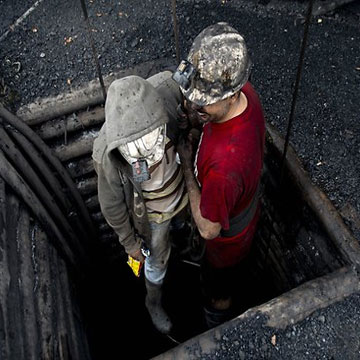 Kolkata:
Kolkata: As a fallout of Coal India Ltd (CIL) raising prices of different grades of the mineral, the power tariff is set to go up, while the other coal consuming sectors would face inflationary pressure, according to experts and stakeholders.
The state-run miner has increased its coal prices by a net average of 6.29 per cent over the current level from Monday. The revision is applicable to all its subsidiaries, as well as to consumers in both the regulated power sector and the non-regulated sectors -- cement, sponge iron, fertiliser.
The revision will enable the company earn an additional Rs 3,234 crore for the remaining period of fiscal 2016-17.
"With the increase in coal prices, the variable cost of power per unit will definitely rise. The average impact on tariff, following around six percent rise in coal prices, will be around 4-5 paise per unit of electricity tariff," Association of Power Producers Director General Ashok Kumar Khurana said.
The impact of coal price increase is passed on to power consumers as the fuel is considered a variable cost component while determining power tariff, he said.
Experts said since the power sector has been experiencing subdued demand, the increase in coal prices would affect the market further.
"At present, the power market is gloomy and demand has gone down, even though some of the states have shortage of power. The increase in coal price will affect the market and tariff will go up," power consultant and Independent Power Producers of India president Asok Dasgupta said.
Depending on the age of power plants, on an average the fixed cost stands at 70 per cent of power tariff per unit, while the variable cost component comprises 30 per cent of per unit tariff.
"With the around six per cent increase in coal prices, the power tariff will increase something by 2-3 per cent," he added.
Some power producers, however, feel the revision of coal prices may push up power tariff by around seven paise per unit.
"Impact is more on power sector as it may affect power tariff by around seven paise per unit," Coal Consumers' Association of India (CCAI) secretary general Subhasri Chaudhuri said.
"The miner has increased the prices of lower grades (G6 to G17) of coal while it decreased higher grades of coal to the range of 1.79 per cent to around 29 per cent (G2 price was reduced by 29.16 per cent). As a result, the net increase of coal price remains around 6.29 per cent," Chaudhuri said.
"Considering the un-uniform increase in prices of different grades of coal, if we take into account only the grades which have seen a rate hike, average increase is around 16 per cent," she added.
Presently, CIL offers 17 grades of non-coking coal with the gross calorific value (GCV) ranging from over 2200 kilo calorie per kg to over 7000 kilo calorie per kg.
The CIL board has approved the differential price for the non-regulated sector at a reduced rate of 20 per cent over the price of regulated sector for G6 to G17 grades of coal.
"For the non regulated sectors, the impact of price rise is relatively less as compared to the power sector. The average increase is around 3.4 per cent if only the hike in different grades is taken into account for the non-power sector," she said.
Coal consumers said the decrease in prices of higher grade coal would not bring cheers to all as this forms hardly 10 per cent of CIL's production. The decrease of G5 grade is merely Rs 50 per tonne.
They also said that over the last six months, the coal consuming sectors have been affected by hike in royalty from 14 per cent to 18.5 per cent, and clean energy cess from Rs 200 to Rs 400 per tonne.
 Kolkata: As a fallout of Coal India Ltd (CIL) raising prices of different grades of the mineral, the power tariff is set to go up, while the other coal consuming sectors would face inflationary pressure, according to experts and stakeholders.
Kolkata: As a fallout of Coal India Ltd (CIL) raising prices of different grades of the mineral, the power tariff is set to go up, while the other coal consuming sectors would face inflationary pressure, according to experts and stakeholders.